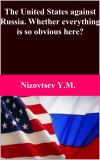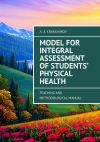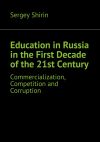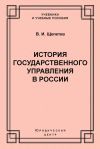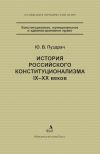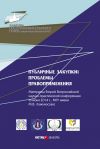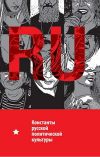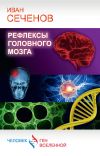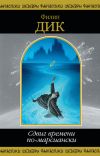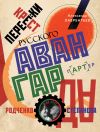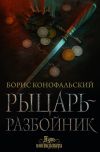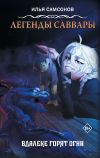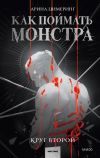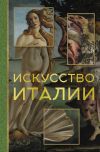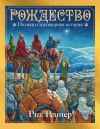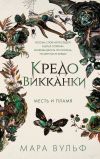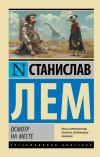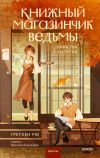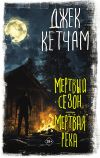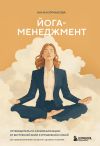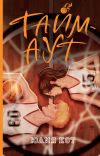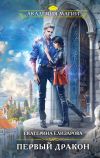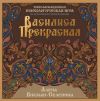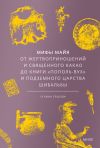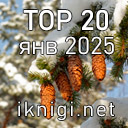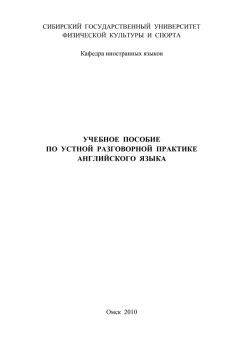
Автор книги: Коллектив Авторов
Жанр: Педагогика, Наука и Образование
сообщить о неприемлемом содержимом
Текущая страница: 2 (всего у книги 8 страниц) [доступный отрывок для чтения: 2 страниц]
Topic 4. SIBERIAN STATE UNIVERSITY OF PHYSICAL CULTURE AND SPORT
I. Match English and Russian words and word combinations.
1) graduates, 2) secondary schools, 3) technical schools, 4) to be founded, 5) an educational establishment, 6) to train qualified specialists, 7) an admission, 8) a staff, 9) to rename, 10) to be headed by, 11) a rector, 12) to receive the status of the university, 13) to give a qualification, 14) a Bachelor, 15) accommodations, 16) buildings for study, 17) libraries, 18) sport facilities, 19) a track-and-field indoor stadium, 20) swimming pools, 21) stadiums, 22) sport halls, 23) skating rinks, 24) football fields, 25) hockey grounds, 26) tennis courts, 27) full-time tuition, 28) extramural tuition, 29) faculties, 30) a dean, 31) chairs (departments), 32) to fulfill post-graduate training, 33) magistrate, 34) post-graduate course, 35) doctorate, 36) Institute of Improvement of Professional Skill, 37) a council, 38) to defend candidate and doctor theses, 39) to defend the honour of the university on sport arenas, 40) to participate, 41) Olympic champions, 42) World champions.
1) спортивные залы, 2) набор, 3) защищать кандидатские и докторские диссертации, 4) быть возглавляемым кем-либо, 5) футбольные поля, 6) магистратура, 7) олимпийские чемпионы, 8) библиотеки, 9) декан, 10) докторантура, 11) совет, 12) штат, 13) спортивные сооружения, 14) выпускники, 15) средние школы, 16) переименовывать, 17) чемпионы мира, 18) присваивать квалификацию, 19) подготавливать квалифицированных специалистов, 20) факультеты, 21) быть основанным, 22) техникумы, 23) образовательное учреждение, 24) ректор, 25) получить статус университета, 26) бакалавр, 27) помещения, 28) учебные корпуса, 29) легкоатлетический манеж, 30) бассейны, 31) стадионы, 32) катки, 33) хоккейные коробки, 34) теннисные корты, 35) заочное обучение, 36) очное обучение, 37) кафедры, 38) осуществлять послевузовскую подготовку, 39) аспирантура, 40) Институт повышения квалификации, 41) участвовать, 42) защищать честь университета на спортивных аренах.
II. Repeat the words after your teacher then read them yourself and guess their meanings.
1. Subjects: theory and history of physical culture, life safety providing, pedagogy, psychology, economic theory, philosophy and history, Russian and foreign languages (English, German, French), biology, chemistry, biochemistry, biorhythmology, anatomy, physiology, biomechanics, mathematics, physics, informatics, sport metrology, sport management, valeology, age pedagogy, sport journalism, adaptive physical culture, sport rehabilitation, sport hygiene, sport medicine, therapeutic massage.
2. Sports: swimming, track-and-field athletics, hockey, football, wrestling, weight-lifting, cycling, skating, boxing, fencing, gymnastics, acrobatics, calisthenics, sport gymnastics, sport dances, basketball, volleyball, handball, badminton, skiing, biathlon, lawn tennis, tourism, shaping, aerobics, martial arts.
III. Read and translate the text.
Siberian State University of Physical Culture and Sport is a large educational, scientific and sport centre. One may meet its graduates in the Urals, in the Far East, in towns and villages of European part of Russia. They work at secondary schools and technical schools, in sport clubs, sport teams, sport organizations.
The first Institute of Physical Culture was founded in Siberian city Tomsk in 1920. But due to economic and political hardships it existed only 3 years. But such vast territory of the country as Siberia needed educational establishment to train qualified specialists in physical culture and sport. In 30–40-es technical secondary schools of physical culture were opened in Novosibirsk, Krasnoyarsk, Irkutsk, Omsk. In 1950 the Institute of Physical Culture was founded in Omsk. Its first admission was 100 young men and women. The staff numbered 10–15 teachers. It had the only building in Lenin Street.
In 1994 the institute was renamed into Siberian State Academy of Physical Culture. It is headed by a rector. In 2002 Siberian State Academy of Physical Culture received the status of the university.
The university trains specialists in physical culture and sport for the vast territory of Siberia and the Far East giving a qualification of a coach and a school teacher in physical culture and the title of a Bachelor or a specialist in physical culture and sport.
Students have good accommodations for study, trainings, rehabilitation and rest. There are 5 buildings for study, computer halls, libraries. Students have all necessary sport facilities: track-and-field indoor stadium, swimming pools, stadiums, sport halls for wrestling, boxing, gymnastics, badminton, volleyball, basketball, handball, skating rinks, football fields, hockey grounds, tennis courts, and others.
Students can choose a full-time or an extramural form of tuition. Students are trained in 5 faculties: 1) faculty of cyclic, complexcoordinating sports and martial arts; 2) faculty of wrestling, playing and power sports; 3) faculty of tourism, recreation and rehabilitation; 4) humanitarian faculty; 5) extramural tuition faculty. Each faculty is headed by a dean.
There are more than 20 theoretical and sport chairs (departments) at the university. The teachers of the university train specialists in theoretical subjects including: theory and history of physical culture, life safety providing, pedagogy, psychology, economic theory, philosophy and history, Russian and foreign languages (English, German, French), biology, chemistry, biochemistry, biorhythmology, anatomy, physiology, biomechanics, mathematics, physics, informatics, sport metrology, sport management, valeology, age pedagogy, sport journalism, adaptive physical culture, sport rehabilitation, sport hygiene, sport medicine, therapeutic massage.
Coaches of high qualification train students in sports including: swimming, track-and-field athletics, hockey, football, wrestling, weightlifting, cycling, skating, boxing, fencing, gymnastics, acrobatics, calisthenics, sport gymnastics, sport dances, basketball, volleyball, handball, badminton, skiing, biathlon, lawn tennis, tourism, shaping, aerobics, martial arts.
The university fulfils post-graduate training in magistrate, postgraduate course, doctorate, Institute of Improvement of Professional Skills for teachers and coaches. The university has a special council to defend candidate and doctor theses in such subjects as: theory and methods of physical education, sport training and health-improving physical culture, sport psychology, physiology of humans and animals, social philosophy.
Students and graduates defend the honour of the university on sport arenas. Many students participated in Olympic Games and became Olympic champions and World champions. Here are some of them: Olympic champions – Konstantin Vyrupayev, Alexander Karelin, Shamil Khisamutdinov, Mikhail Mamiashvili are champions in Greco-Roman wrestling, Gennady Komnatov and Sergei Shelpakov – in cycling, Vladimir Barnashov – in biathlon, Yury Mukhin and Denis Pimankov – in swimming, Grigory Kirienko – in fencing; World champions – Vladimir Sokolov, Galima Shugurova, Edward Rapp and many others.
IV. Answer the questions.
1. When and where was the first Institute of Physical Culture founded?
2. When was the Institute of Physical Culture founded in Omsk?
3. What was the admission?
4. What was the staff?
5. When was the institute renamed into Siberian State Academy of Physical Culture?
6. Who heads the university?
7. When did Siberian State Academy of Physical Culture receive the status of university?
8. What accommodations do students have?
9. What sport facilities do students have?
10. What two forms of tuition are there at the university?
11. Who heads faculties?
12. What subjects do students study at the university?
13. What opportunities are there for students who want to continue their study at the university?
V. Agree or disagree with the statements. If the statement is correct, you should say «It’s true» or «I agree». If the statement is not correct you should say «It’s false» or «I disagree» and correct it.
1. Siberian State University of Physical Culture and Sport is a large educational, scientific and sport centre.
2. The first Institute of Physical Culture was founded in Kemerovo.
3. In 1970 the Institute of Physical Culture was founded in Omsk.
4. In 2008 Siberian State Academy of Physical Culture received the status of University.
5. The university fulfils post-graduate training in magistrate, postgraduate course, doctorate, Institute of Improvement of Professional Skills for teachers and coaches.
6. The University has special council to defend candidate and doctor theses.
7. Students and graduates defend the honour of the university on sport arenas.
8. Students receive various qualifications after graduating from the university.
VI. Make up your own three statements; use the information from the text. One of your statements should be false. Read them to the students. Their task is to say which of your statements is false and correct it.
VII. Translate the sentences from Russian into English.
1. Сибирский государственный университет физической культуры и спорта – большой образовательный, научный и спортивный центр. 2. Его выпускников можно встретить на Урале, на Дальнем Востоке, в городах и селах Европейской части России.
3. Они работают в средних школах и техникумах, в спортивных клубах, в спортивных командах и в спортивных организациях.
4. Первый институт физической культуры был основан в сибирском городе Томске в 1920.
5. Но из-за экономических и политических трудностей просуществовал только 3 года.
6. Но такая огромная территория страны как Сибирь нуждалась в образовательном учреждении, которое бы осуществляло подготовку квалифицированных специалистов в области физической культуры и спорта.
7. В 30–40-е годы технические средние школы физической культуры были открыты в Красноярске, Новосибирске, Иркутске, Омске.
8. В 1950 году Институт физической культуры был основан в Омске.
9. Первый набор студентов составил 100 юношей и девушек.
10. Штат насчитывал 10–15 преподавателей.
11. Университет имел одно единственное здание, расположенное на улице Ленина.
12. В 1994 году университет был переименован в Сибирскую государственную академию физической культуры и спорта.
13. Университет возглавляет ректор.
14. В 2002 году Сибирская государственная академия физической культуры и спорта получила статус университета.
15. Университет осуществляет подготовку специалистов в области физической культуры и спорта для огромной территории Сибири и Дальнего Востока, присваивая квалификацию тренера или школьного учителя физической культуры и степень бакалавра или специалиста в области физической культуры и спорта.
16. Студенты имеют хорошие помещения для учебы, тренировок, восстановления и отдыха.
17. Имеются 5 учебных корпусов, компьютерные залы, библиотеки.
18. Студенты имеют все необходимые спортивные сооружения.
19. Студенты могут выбрать очную или заочную форму обучения.
20. Осуществляется подготовка студентов на пяти факультетах (назовите факультеты).
21. Каждый факультет возглавляет декан.
22. Имеется более двадцати теоретических и спортивных кафедр в университете.
23. Университет осуществляет послевузовскую подготовку в магистратуре, аспирантуре, докторантуре и Институте повышения квалификации для преподавателей и тренеров.
24. В университете есть совет для защиты кандидатских и докторских диссертаций.
25. Студенты и выпускники защищают честь университета на спортивных аренах.
VIII. Supplementary tasks.
1. Retell the text from your point of view as a student. What other advantages and disadvantages of the university can you add?
2. Say what achievements the university has as the centre of sports life in our city. Outline the perspectives.
3. Make the advertisement of the university. Say what attracts you and invite others to enter the university.
4. Imagine that you are a reporter. Make a piece of reporting about Siberian State University of Physical Culture and Sport. Say as much as you can about the university.
IX. Compose an essay on the topic «My university». Be ready to speak on the topic «My university».
Topic 5. THE RUSSIAN FEDERATION. SPORT IN RUSSIA
I. Glossary.
Geographical outline: stretch over, a vast expanse of, cover twice the territory of, in the north/south/west/east, border on, wash, be washed by seas and oceans, conjoined, take up, rolling uplands, the relief is scattered with lakes and swamps, northern/southern/eastern/western, the river basins are cut by valleys and ravines, boundary, separate smth from smth, the highest peak, reach, range from… to… merge, be bounded by smth, mountain chains, peninsula, island, flow in, become the cradle, extensive, lowland, highland, rank, be inhabited by, majority, be unequally distributed, the bulk of the people, be insufficiently populated, rapid, uninhabitable, climate, mild, harsh, limit smth, arable land, flora, fauna, latitudinal, tundra, moss, taiga, coniferous forest, deciduous forest, mixed forest, steppe, deposits of mineral resources, coal, oil, natural gas, iron ore, copper, zinc, lead, nickel, aluminium, tin, develop rapidly, be determined by smth, heavy industry, light industry, chemical industry, highly-developed.
Political structure: be set up, the Constitution, sovereign, the head, be headed by, be elected by, a four-year term, the President, commanderin-chief of the armed forces, make treaties, enforce laws, appoint, the prime minister, override, dissolve, the parliament, the government, branch of power, consist of, legislative, executive, judicial, be vested in the Federal Assembly, the Council of Federation, the State Duma, popular vote, chamber, chairman, a bill, approve smth, sign smth, belong to smb, be represented by smb/smth, the Constitutional Court, the Supreme court, regional courts, state symbol, symbolize smth, three-colored flag, hymn, the national coat of arms, a two-headed eagle.
II. Fill in the gaps using the essential vocabulary.
Russia … for some 17 million square kilometers. Our country … of the USA. It … China, Korea … Norway and Finland … Russia … 3 oceans and numerous … The distance between the most northern and most southern points … … 3500 … 4000 km. The country has about 3 000 000 … the longest one is the Volga. The Baikal is not only the deepest … but also the world’s greatest freshwater reservoir. The Urals … the European part of Russia … the Asian part. There are several … such as the Caucasus and the Altai. The … are the … of Communism (7495 m), the … of Pobeda (7439 m) and Lenin … (7134 m). Mountains greatly influence … of Russia. Forests and plains … most of Russia’s territory. The country is rich in many … especially in coal, natural gas, and ores. The current … of Russia is about 150 million people. Russia as a state is a … … The … of the state is the President who controls all the three … …
The Federal Assembly … the Council of … and the State … exercises … The executive power … to the government which … by the prime minister. The … is represented by the … … and regional courts. Today the state Russian … is three colored. The national coat of arms is … It is the most ancient … of our country.
III. Write O for oceans, S for seas, R for rivers, L for lakes, I for islands, P for peninsulas, Rg for regions.


IV. Read and translate the text A.
Text A
Geographical outline
Russia stretches over a vast expanse of eastern Europe and northern Asia. It is the world’s largest country. Russia covers almost twice the territory of either the United States or China. In the west Russia borders on Finland, Estonia, Latvia, Lithuania, Belarus, Ukraine, and Poland through Kaliningrad province. In the south our country borders on Georgia, Azerbaijan, Kazakhstan, Mongolia, China, and North Korea.
Russia is washed by twelve seas and three oceans. It confronts the Baltic Sea in the west. The Black, Caspian, and Azov Seas wash Russia in the south. The Arctic Ocean and conjoined seas such as the White, Barents, Kara, Laptev, East-Siberian Seas are in the north. The Pacific Ocean and conjoined seas including the Bering, Okhotsk, and Japanese Seas wash Russia in the east.
Russia’s main regions are the Russian (or East European) Plain, the Ural Mountains, the West Siberian Plain, the Central Siberian Plateau, and the Far East.
The Russian Plain takes up the European part of Russia. There are low, rolling uplands and broad rivers there. In the north the relief of the plain is scattered with lakes and swamps. In the southern part of the plain the river basins are cut by valleys and ravines. In the south, the Russian Plain is edged by the Caucasus Mountains between the Black and Caspian seas. The Urals form the eastern boundary of the Russian Plain. It is held that the Urals separate Europe from Asia. The Urals stretch for about 2100 km from north to south. The highest peak, Mount Narodnaya, reaches 1895 m, and other mountain tops range from 900 to 1500 m. The West Siberian Plain merges in the east with the Central Siberian Plateau. The easternmost part of Russia is bounded by various mountain chains.
The Far East of Russia includes the Kamchatka and Chukchi peninsulas and the Kuril and Sakhalin Islands.
The most important rivers in the European part of Russia are the Don and the Volga. The Volga River, which flows in the Caspian Sea, is of great historic, economic, and cultural importance to Russia. It has become the cradle of such ancient Russian cities as Vladimir, Tver, Yaroslavl, Kazan, Nizhny Novgorod. In the West Siberia the greatest rivers are the Ob and Yenisei. They flow along the most extensive lowland in the world. The Yenisei flows into the Kara Sea.
In Russia there are about 3 000 000 beautiful lakes. The Baikal is the deepest lake in the world. Other important lakes are the Ladoga Lake and Onega Lake.
Russia ranks ninth in the world in the size of its population. The great majority of the population of Russia are Russians. Russia is inhabited by sixty other nationalities. The population of Russia is unequally distributed. The bulk of the people live in the European part of the country.
There are various types of climate on the territory of Russia. Continental climate, with cold winters and mild or warm summers prevails. The harshness of the Russian climate limits the amount of arable land to about one-seventh of the total area.
Different latitudinal climatic regimes are mirrored in Russia’s flora. A treeless tundra with mosses and grasses extends along the entire Arctic coast. In the south it gives way to taiga. This coniferous forest growing on swampy ground covers more than half of the country. In European Russia, towards the south the taiga is replaced by a zone of mixed coniferous and deciduous forest which in the south transfers into mixed foreststeppe and finally into the almost treeless, grass-covered steppe.
Russia has the richest deposits of mineral resources in the world. It is one of the world’s biggest producers of coal, oil, and natural gas, as well as of iron, copper, zinc, lead, nickel, aluminium, and tin.
The development of the Russian economy is determined by its natural resources. Russia’s heavy industries are well-developed. They produce much of the nation’s steel and most of its heavy machinery, such as steam boilers, grain-harvesting combines, automobiles, locomotives, and machine tools. Russia’s chemical industry is also well-developed. Light industry is not so highly-developed and centers mainly on the production of textiles.
Task 1. Find answers to the following questions in the text.
1. Where is Russia situated?
2. What is Russia washed by?
3. What are Russia’s main regions?
4. What can you tell about each region?
5. What are the most important rivers in Russia?
6. What is the deepest lake in Russia?
7. What can you say about the population of Russia?
8. What types of climate are there on the territory of Russia?
9. Is Russia’s flora rich?
10. What can you say about Russia’s natural resources?
11. Is Russia’s industry well-developed?
Task 2. Try to define the key notes of the text after answering the questions and write a summary.
Task 3. Speak about Russia according to the following plan.
1. Russia’s physical features.
2. Climate.
3. Population.
4. Flora.
5. Industry.
V. Read and translate the text B.
Text B
Political system of Russia
The Russian Federation was set up by the Constitution of 1993. After its destruction the Soviet Union was broken up into independent Russia and 14 other new, sovereign nations.
Under the Constitution of 1993 Russia is a presidential republic. It is headed by the President who is elected for a four-year term. The President is commander-in-chief of the armed forces, he makes treaties, and enforces laws, appoints the prime minister, cabinet members, and key judges. The President can override and in some cases dissolve the national parliament, the bicameral Federal Assembly.
The government consists of three branches: legislative, executive and judicial. Each of them is checked and balanced by the President. The legislative power is vested in the Federal Assembly. It consists of the Council of Federation (upper house) and the State Duma (low house). The members of the State Duma are elected by popular vote for a four-year period. The Council of Federation is not elected. It is formed of the heads of the regions. Each Chamber is headed by the Chairman. Legislature is initiated in the State Duma. But to become a law a bill must be approved by the Lower and Upper Houses and signed by the President. The executive power belongs to the Government. The judicial branch is represented by the Constitutional Court, the Supreme Court, and regional courts.
Today the state Russian flag is three colored. It has three horizontal stripes: white, blue and red. The white stripe symbolizes the earth, the blue one stand for the sky, and the red one signifies liberty. It was the first state symbol to replace the former symbols in 1991. The hymn of Russia is created by Alexandrov and Mikhalkov. Now the national coat of arms is a two-headed eagle. It is the most ancient symbol of Russia.
Russian is the official, but not the only language which people speak in the country. Members of more than 60 other ethnic groups who live in Russia speak their own languages. The people of the Altaic group speak mainly Turkic, and Mongolian languages. The members of the Uralic group speak Uralic languages. The representatives of the Caucasus group speak various languages of the North Caucasus region of Russia. The people of Paleosiberian groups speak variety of languages of far-eastern Siberia.
Task 1. Find answers to the following questions in the text.
1. When was the RF set up?
2. Who is the head of the RF?
3. What are the branches of the Russian government?
4. What are Russia’s state symbols?
5. What is the official language of the RF?
Task 2. Extract the most important information and retell the text.
VI. Try your hand in interpreting.
A. 1. Западный берег этого острова омывается теплыми водами Тихого океана. 2. Я не думаю, что спорт занимает у тебя слишком много времени. 3. Большая река отделяет северную часть города от южной. 4. Мы наблюдаем стремительное развитие российской тяжелой, легкой и химической промышленностей. 5. Климат во Франции не суровый, а мягкий. 6. Суровость российских зим ограничивает площадь пахотных земель. 7. Китай занимает первое место в мире по численности населения. 8. Большинство студентов нашего университета – спортсмены. 9. Россия одна из немногих стран, у которых в недрах есть практически все минеральные ресурсы. Она богата углем, нефтью, природным газом, железной рудой, медью, цинком, никелем, оловом, свинцом, алюминием. 10. Если вы посмотрите на карту РФ, то в ее восточной части вы увидите Камчатский полуостров, Курильские и Сахалинские острова. 11. Эта река образует естественную границу между двумя странами. 12. Шотландия – это страна с холмистыми возвышенностями и хвойными лесами. 13. Гора Народная является самой высокой вершиной для скалолазов в Уральских горах. Ее высота достигает 1895 метров. 14. Наш новый дом в Сочи расположен в паре кварталов от моря. 15. Этот двор отделен от фабрики высоким забором. 16. Леса покрывают половину площади Канады. 17. На западе нашу страну омывает Атлантический океан. 18. Обширные территории фермерских земель простираются на сотни километров. 19. Флорида граничит с Джорджией на севере. 20. Эти файлы занимают много места на диске. 21. Киев стал колыбелью русской культуры еще много веков назад. 22. Восточная часть России окружена горными цепями. 23. Климат на территории нашей страны варьируется от арктического на севере до субтропического на юге. 24. Река Иртыш впадает в Обь. 25. Север России расположен в арктической и субарктической зонах с тундрой и тайгой, а юг – в субтропической зоне со степями и пустынями. 26. Стемнело, и холмы слились с небом позади них. 27. Реки Западной Сибири, Обь и Енисей, протекают вдоль самой обширной низменности в мире. 28. Эти острова населяют 17 тысяч человек. 29. Большинство людей проживает в Европейской части России, тогда как Сибирь и Дальний Восток недостаточно населены, а некоторые части этих регионов остаются безлюдными.
B. Российская Федерация – президентская республика. Это означает, что ее возглавляет президент. Он заключает соглашения и подписывает законы. Государственная власть состоит из трех ветвей: законодательной, исполнительной и судебной. Законодательная власть представлена Федеральным собранием. Оно состоит из Совета Федерации и Государственной думы. Исполнительная власть принадлежит правительству, которое возглавляет премьер-министр. Судебная власть представлена Конституционным судом, Верховным судом и региональными судами. Сегодня государственными символами России являются национальный гимн, трехцветный флаг и герб с двуглавым орлом.
VII. Read and translate the text.
Sport in Russia
Sport in Russia has always been popular. Perhaps more than a half of Russians have tried some kind of sport in their childhood. So which sports are better developed in Russia? Russia, as a rule, has good results in classical kinds of sport. This is in some ways connected with the period of Soviet Union when big attention was paid to physical education of the youth. But the lessons of Soviet school didn’t go without any influence. Quite often foreign sportsmen, lead by Russian trainers, appear on world level competitions. Also often you can see Russian sportsmen fighting of medals for other countries. There are many jokes about it. For example when you watch international competitions you hear that the trainers and the sportsmen easily understand each other because they all speak Russian.
In modern kinds of sport Russians lag behind their contenders a little. We can refer here curling, springboard jumping etc. Frankly speaking some Russians still can't see these activities as serious kinds of sport. But the situation has been changing nowadays. Actually, a healthy way of life is again coming into fashion in Russia today. That is why people have started to take an interest in sport. Even those who perceived it only as something that they could watch on TV, now come to gyms and swimming pools. That is why Russians are beginning to open to new kinds of sport. Let’s hope that this will reflect in results of different level competitions.
Tennis has a large popularity. Some people connect that with the fact that this sport was a hobby of Russian ex-president Boris Yeltsin. Today Russian tennis players are famous all over the world. Sharapova, Kurnikova, Kafelnikov, Miskina are only the best known Russian tennis players. They play wonderfully at Wimbledon and other competitions.
Ice-hockey is another one successful sport in the country. The Russian team takes worthy places in competitions. The traditions of Soviet school are kept here too. Though, unfortunately it isn’t as strong as in the past. In USSR there was a period when hockey team won 9 world championships in a row. Furthermore, there are only 2 hockey players which became championship winners 10 times. These are Russian sportsmen Alexander Rogulin and of course Vladislav Tretyak. Nowadays there are also good players in Russian hockey. Another sport which is widespread in the country is football. There are many amateurs of this game in Russia.
And of course the favorite sport of many women is figure skating. This is a very beautiful show. And here Russia is still the leader. Though it has had very worthy rivals lately. For example Chinese sportsmen who to my mind have good perspective. But don’t forget about Russian figure skaters. Today they are favorites at any competition. Besides, figure skating is quickly getting popularity in the country. New ice rinks are opened, parents take their children to sport schools. Actually many kinds of sport are popular in Russia. Both on a professional level and on an amateur one. Ski sport and volleyball are good examples here.
We should say some words about Russian supporters. Here we can call it a kind of sport too. The sense of empathy is inherent to Russians. The team spirit lives in them. Russians prepare for going and supporting their favorite team in advance. They buy flags which sometimes achieve great sizes. On the scarves, caps and etc. – everywhere it’ll be possible to see the colours of Russian flag. When you watch the competitions of the international level on TV then you’ll here through the voice of commentator the tribunes shouting «Rossya! Rossya!». And no matter where the match takes places in Russia or in 1000 km from it you’ll anyway hear this. Russians are ready to overcome big distance to see the performance of their favourite sportsmen.
Task 1. Give English equivalents for:
откровенно говоря, здоровый образ жизни, уделять большое внимание физическому воспитанию молодежи, популярность, бороться за медали, готовиться заранее, шутка, международные состязания, командный дух, входить в моду, появляться на соревнованиях мирового уровня, иметь хорошие результаты в классических видах спорта, в наше время, любитель, влияние, соблюдать традиции, проходить, преодолевать большие расстояния, воспринимать, занимать достойные места, набирать популярность, кричать, отставать от предшественников, подряд, красивое зрелище, деятельность, возглавлять, успешный, интересоваться чем-либо, отражаться, выступление, знаменитый, болельщик, к сожалению, открываться чему-либо, широко распространенный, чувство сопереживания, соперник, к тому же.
Внимание! Это не конец книги.
Если начало книги вам понравилось, то полную версию можно приобрести у нашего партнёра - распространителя легального контента. Поддержите автора!Правообладателям!
Данное произведение размещено по согласованию с ООО "ЛитРес" (20% исходного текста). Если размещение книги нарушает чьи-либо права, то сообщите об этом.Читателям!
Оплатили, но не знаете что делать дальше?
